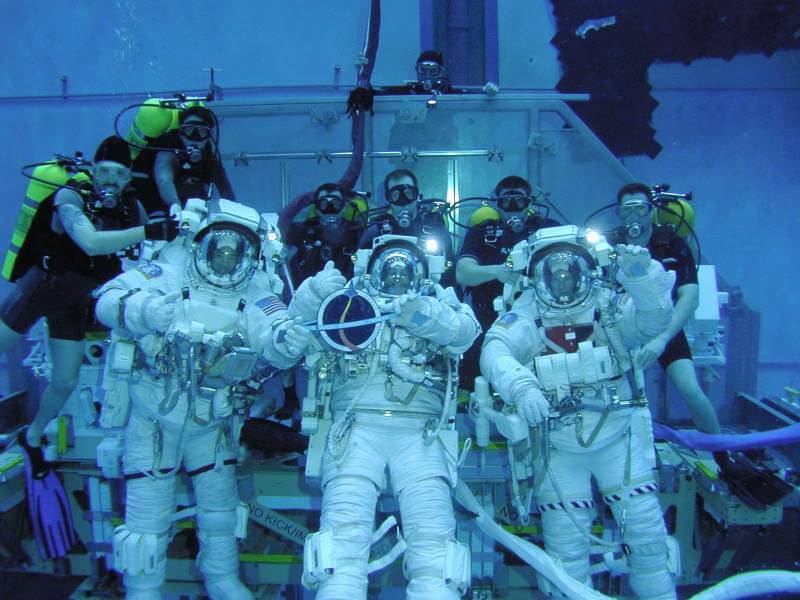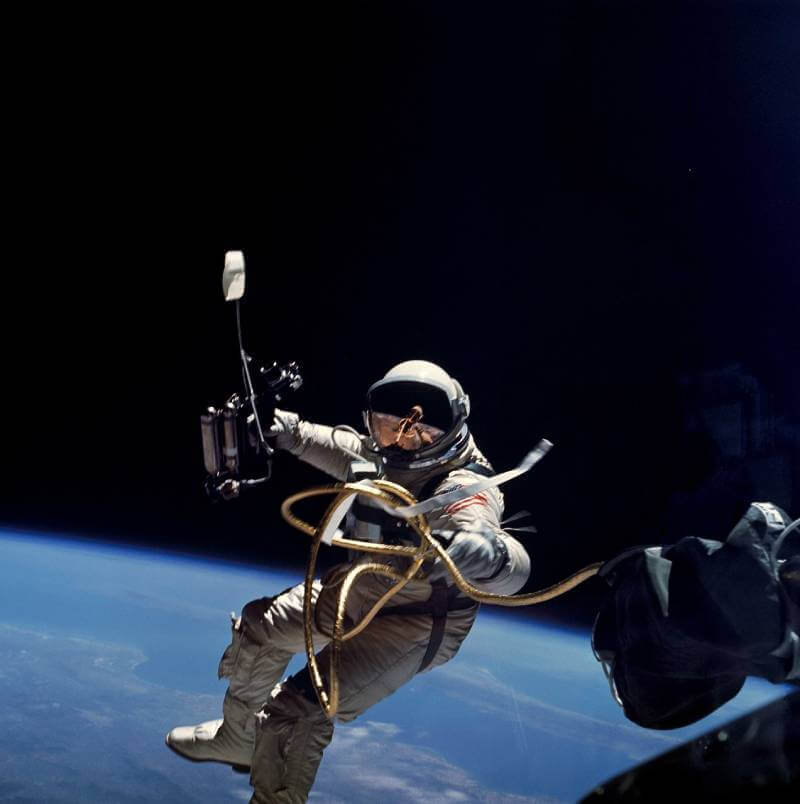When I was young, I had dreams of being a fighter pilot in the United States Air Force. That is until I learned about all of the requirements that I didn’t meet. One of the most common aspirations I hear from kids is their dream of growing up to be an astronaut. However, there is a lengthy list of requirements and screening processes that must be passed in order to pursue this incredible career. Something as common as having a food allergy can knock you out of the ring. Considering all of the advanced training, scientific knowledge, and physical and mental preparations it takes to travel into space; it’s no wonder that becoming an astronaut is just as difficult and exclusive as it may seem.
Minimum Requirements To Apply For NASA’s Astronaut Program
At a minimum, applicants must meet the following requirements:
1.) Be a U.S. Citizen. NASA also considers applicants who have a valid U.S. dual citizenship.
2.) Hold a Master’s degree in a STEM field. This can also be met by two years of work towards a Ph.D. program in a valid field, a completed doctor of medicine or doctor of osteopathic degree, or completion of a nationally recognized test pilot school program. However, those pursuing a career in becoming an astronaut cannot hold just any degree that could be classified in the STEM category. Though they are related to science and engineering, degrees in Nursing, Social Sciences, Aviation, Psychology (except for Clinical, Physiological, or Experimental Psychology, which do qualify), Exercise Physiology, and Technology will not qualify for meeting this requirement.
3.) Have 2 years of relevant professional experience or at least 1,000 hours of pilot-in-command time in a jet aircraft. Because of this last requirement, most astronauts were senior officers in the Air Force, Marine Corps, or Navy, many being top class fighter pilots with experience flying high performance jets. Those who were not in the military tended to be scientists, engineers, or physicians.
Because these are the minimum requirements, not meeting any of the three listed above would result in immediate disqualification. Although, if an applicant checks all the boxes on the above list, which usually takes a minimum of 10 years to achieve, then there are a few more obstacles they need to undergo before they are offered the job.
Can Medical Conditions Disqualify an Astronaut Applicant?
When qualifying a person for spaceflight, NASA physicians must consider not only what is required for normal spaceflight operations but also what each astronaut would require in the event of a serious or life-threatening problem occurring while on a mission. After submitting a general application outlining their experiences, finalists will undergo medical evaluations, psychological testing, and psychiatric screening to determine suitability for a mentally and physically demanding long-duration isolation mission.
Conditions as common as food allergies, avoidances, and/or gastrointestinal disorders will call for immediate disqualifications, as these cannot be accommodated on a long-duration mission. Other examples of medical conditions that will disqualify an applicant include:
● Motion sickness from virtual reality equipment
● Applicants taking specific medications (blood thinners, blood pressure medications, ADHD/ADD medications, antidepressants, daily allergy medications, sleeping aids, diabetic insulin daily, seizure medications, anxiety medications, etc.)
● Applicants who require food supplements daily
● Kidney stones (even if you have only had one once)
Eye-sight requirements, however, are a different story. It has only been since September 2007 that NASA has allowed vision-correcting surgery, such as PRK and LASIK. If an applicant’s vision is no worse than 20/400 and is able to be corrected to 20/20, then they will be considered. NASA required those with great vision for the more obvious reasons to do with flying a spacecraft, but also because the effect on a person’s eyes due to long-duration spaceflight is very serious and does not always recover when they return home.
NASA does not accept or grant any medical waivers for their candidacy requirements. These precautions, which may seem excessive to some, are all to ensure maximum crew safety during spaceflight missions. After applicants participate in this phase of the selection protocol, the final selection will be invited to the Johnson Space Center (JSC) in Houston, Texas for Astronaut Candidate training.
Can An Astronaut Candidate Be Disqualified During Training?
Once selected, candidates have several months to relocate to Houston, where they will attend classes on shuttle systems in basic science and technology, including mathematics, geology, meteorology, guidance and navigation, oceanography, orbital dynamics, astronomy, physics, and materials processing are among the subjects. However, even though their applications have been accepted, Astronaut Candidates are not guaranteed a selection.

Surprisingly enough, during your time as an Astronaut Candidate, if you cannot learn Russian to an “intermediate-low” fluency, you are disqualified from further consideration. To collaborate with NASA, astronauts and cosmonauts from various countries are required to acquire a certain level of proficiency in the English language. As another part of the Astronaut Training Program at the JSC, Candidates are required to complete military water survival prior to beginning their flying syllabus, as well as become SCUBA qualified to prepare for the extravehicular training. During the first month, all Astronaut Candidates are required to pass a swimming test as a part of this training. They must swim three lengths of a 25M pool in a flight suit and tennis shoes. The strokes allowed are freestyle, breast, and sidestroke. There is no time limit. They must also tread water continuously for 10 minutes. If any Candidate is unable to perform sufficiently in these tasks, they will be disqualified.
Conclusion
As we have seen, the process of becoming an astronaut is long and grueling during every step of the way. The whole selection process can take up to 13 months, with a maximum of 16 days of active time required by a candidate throughout this time. This includes time filling out the application, travel time, time at JSC for pre-screening activities, and time at the National Outdoor Leadership School. With all of this in mind, not all candidates pass through to the next phase of the selection process.
Given the danger associated with spaceflight missions, astronauts must be prepared for anything. The top priority is the safety of the crew, so any medical conditions that may hinder their performance during long-duration isolated spaceflight will result in immediate disqualification for that person. Even something as simple as having a food allergy will cut you out of the race to space.
Along with the extensive list of medical restrictions, applicants must meet certain basic requirements that take years to achieve. Even though every Astronaut Candidate who is selected to train at the Johnson Space Center will undergo extensive flight training, most astronauts who have been selected already have more than enough hours logged in flying aircraft. It is a common misconception that you must possess a Ph.D. to become an astronaut, but in fact, nearly half of all the astronauts selected over the years since the first selection in 1959 only have a Master’s degree.
Even if they make it past the basic requirements application and the medical screenings, Astronaut Candidates can still be disqualified during their training. Language barriers, physical restrictions, or not being a good enough swimmer can disqualify a person from consideration for a mission.

